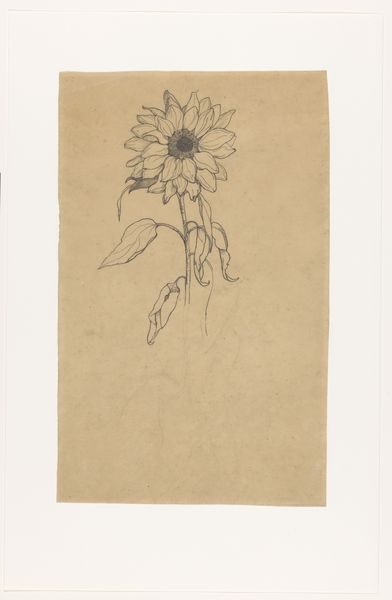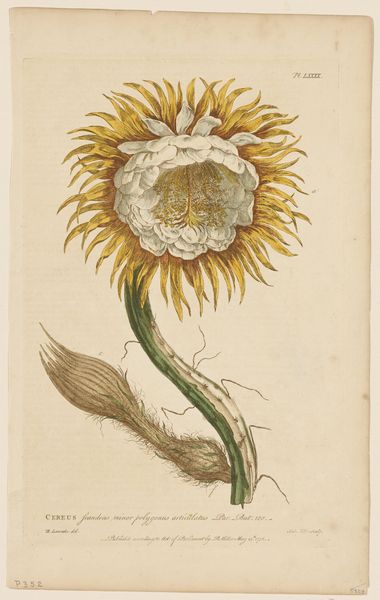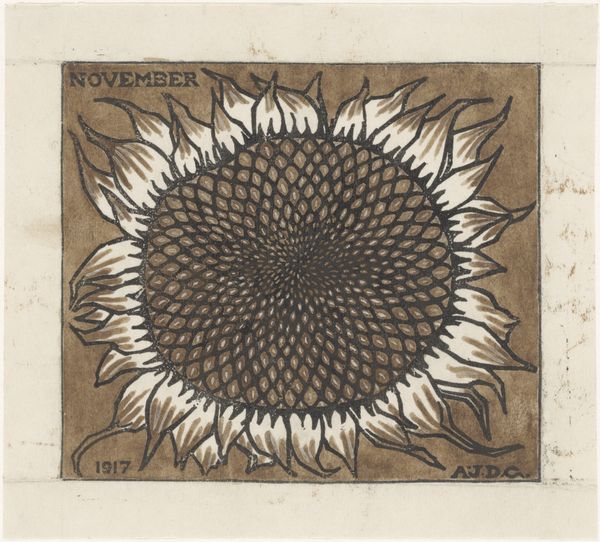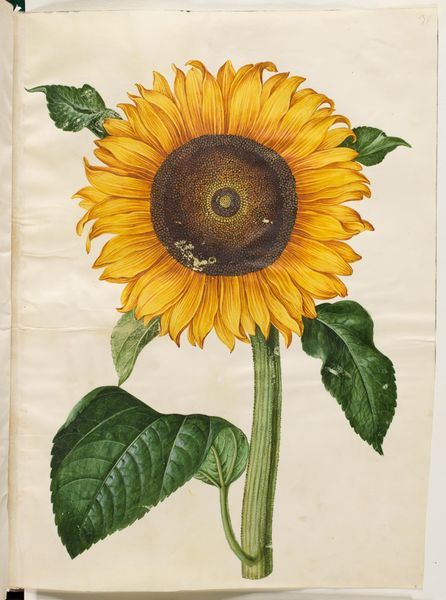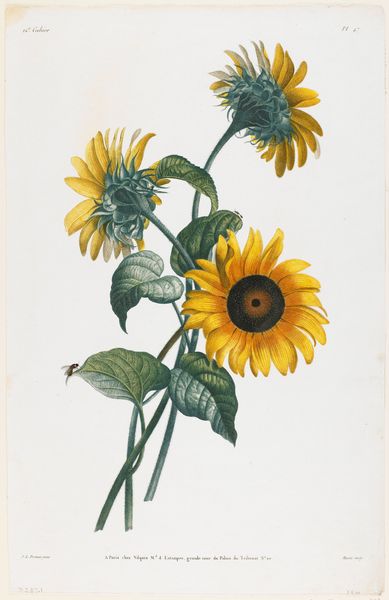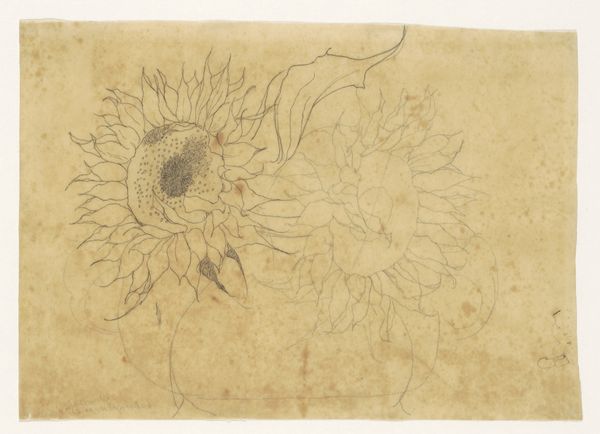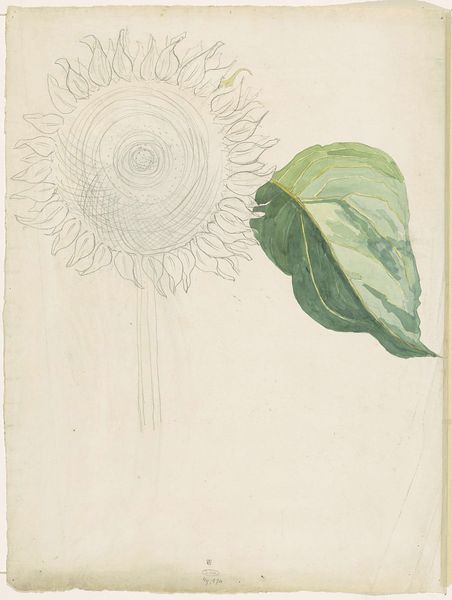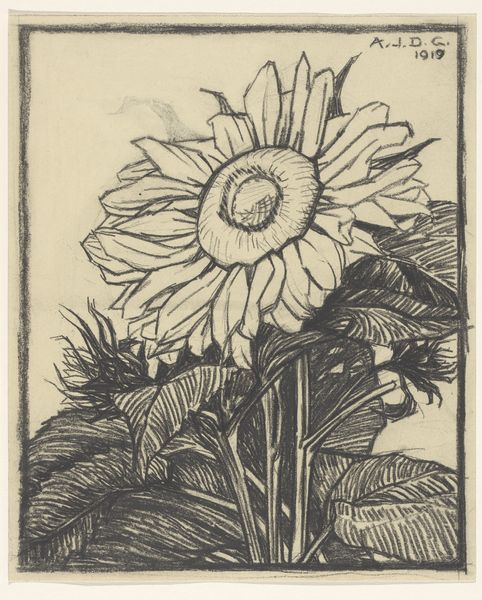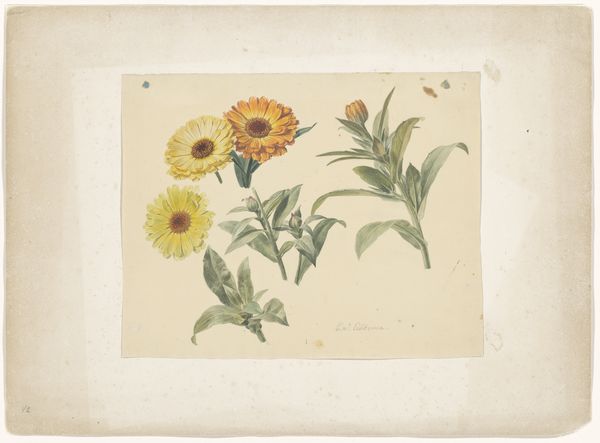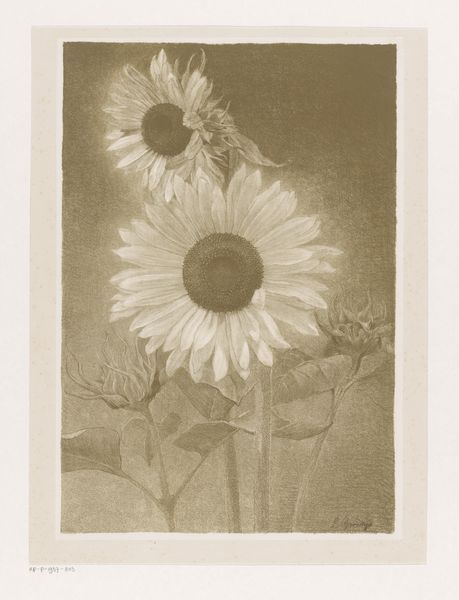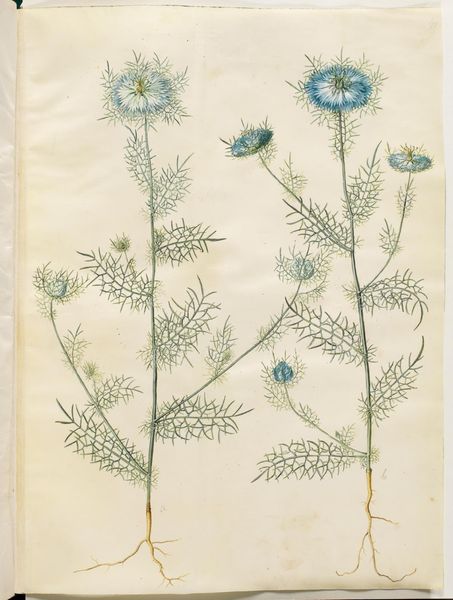
Dimensions: height 630 mm, width 474 mm
Copyright: Rijks Museum: Open Domain
Editor: Here we have Martinus van Andringa's "Zonnebloem," painted sometime between 1874 and 1918, using watercolors. There's something fragile about it, like a pressed flower in an old book. What do you see in this piece? Curator: The seeming simplicity of a single sunflower invites us to consider its multifaceted context. Beyond its aesthetic appeal, the sunflower carries symbolic weight, especially considering the timeframe. Painted during an era of burgeoning national identity, how might this solitary bloom reflect Dutch resilience and hope in the face of larger European sociopolitical movements? Editor: I hadn’t thought of it that way! It’s easy to just see a flower, but the era really shapes its meaning. Curator: Exactly! Think about the impressionistic style. How does the "plein-air" technique impact the meaning of this work? The use of light and color wasn't merely about capturing the likeness of the flower, but also, potentially, about capturing a specific moment in time. What might that suggest about Van Andringa's relationship to their environment? Editor: I guess the fleeting nature of impressionism could mirror the transient nature of life, especially poignant considering the societal changes happening then. Curator: Precisely. Also, considering that Van Andringa is male, we could reflect upon art-historical bias against domestic, nature-based imagery, which have often been devalued as feminine. Is this just an innocent watercolor, or a subversive statement on artistic hierarchy? Editor: This gives me so much to think about. Thanks! It’s like, you look at the sunflower, but you are actually looking at so much more! Curator: Indeed! Analyzing art through intersectional lenses always reveals something new.
Comments
No comments
Be the first to comment and join the conversation on the ultimate creative platform.
